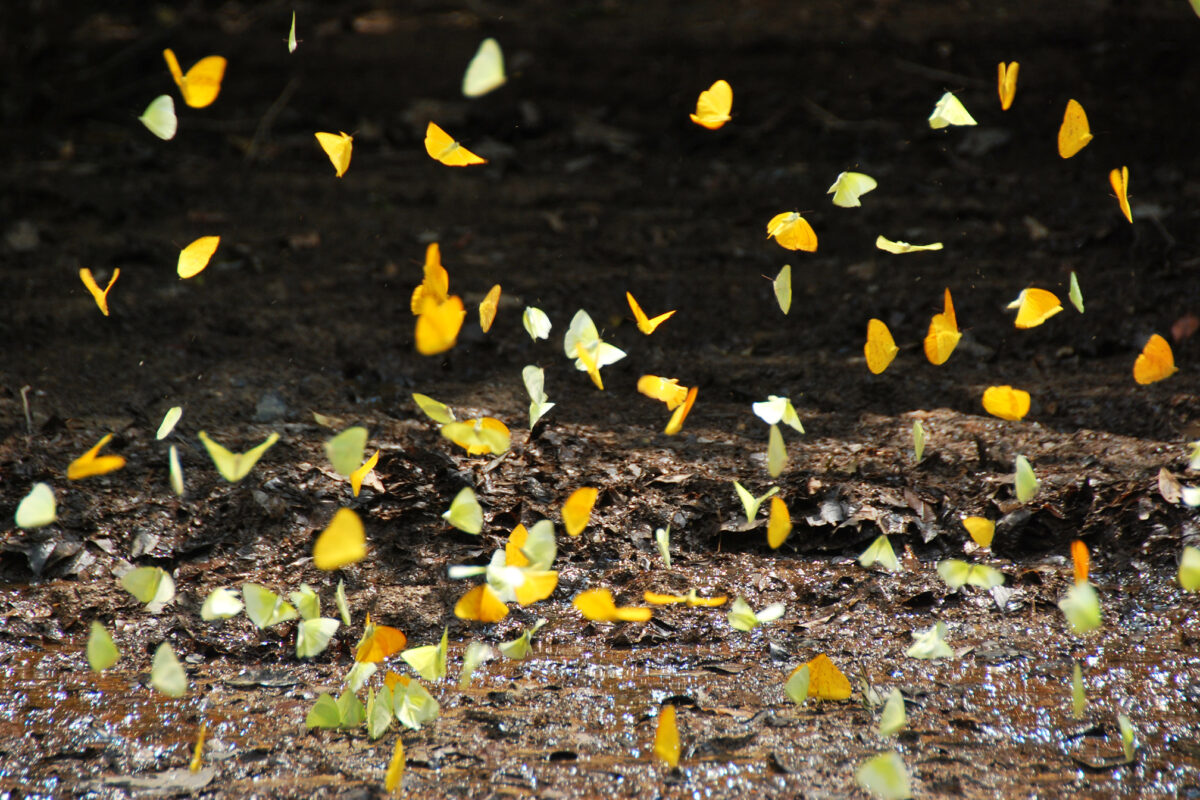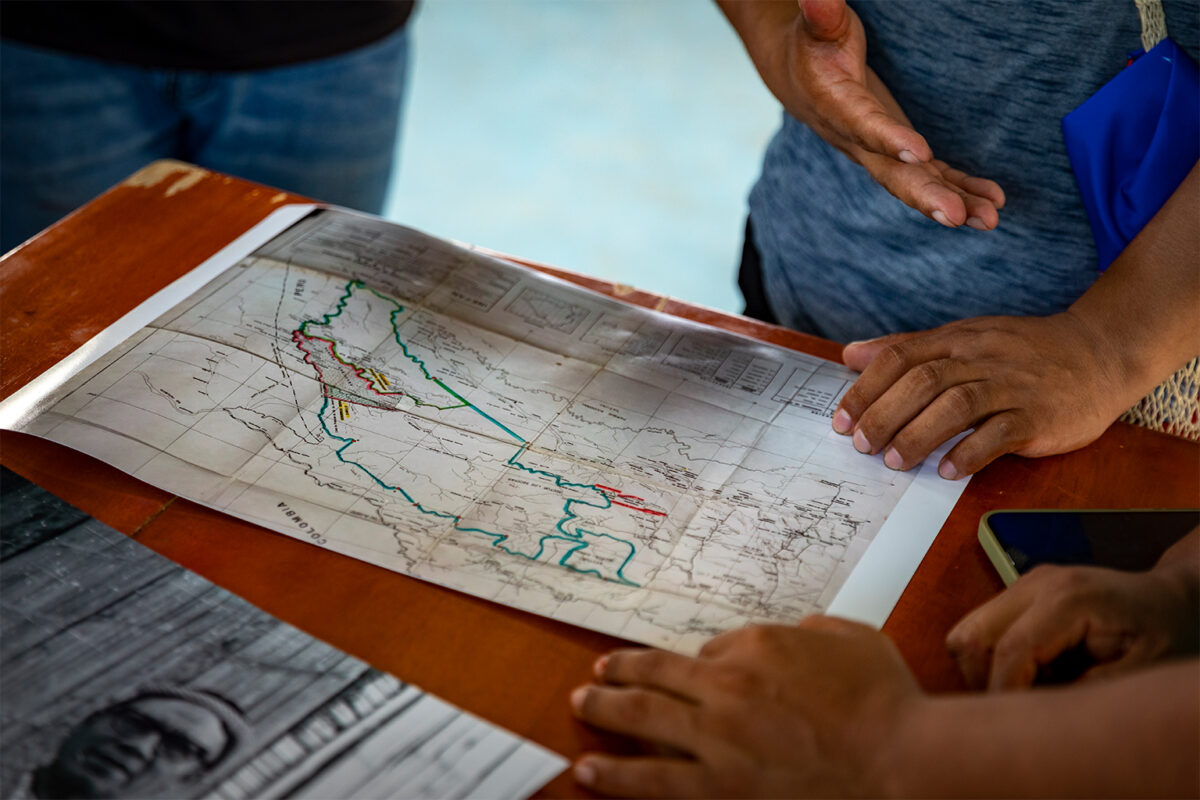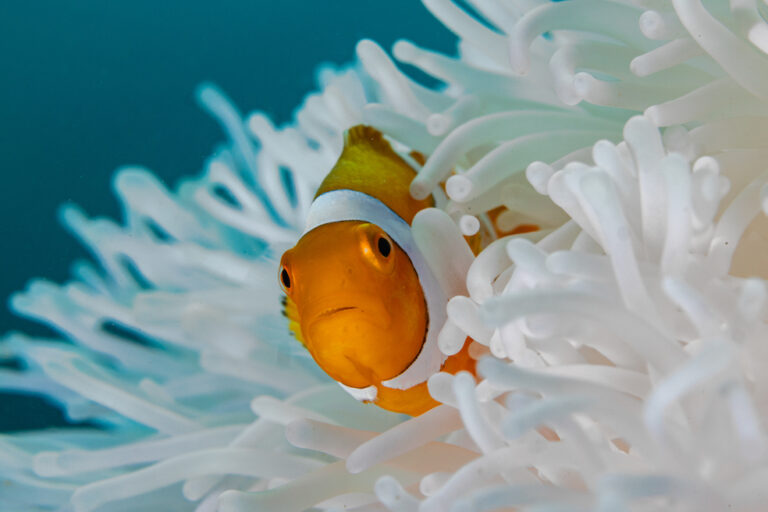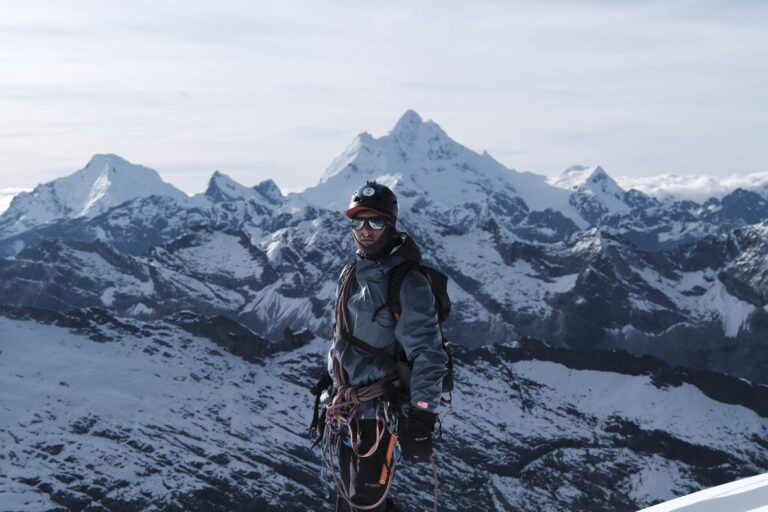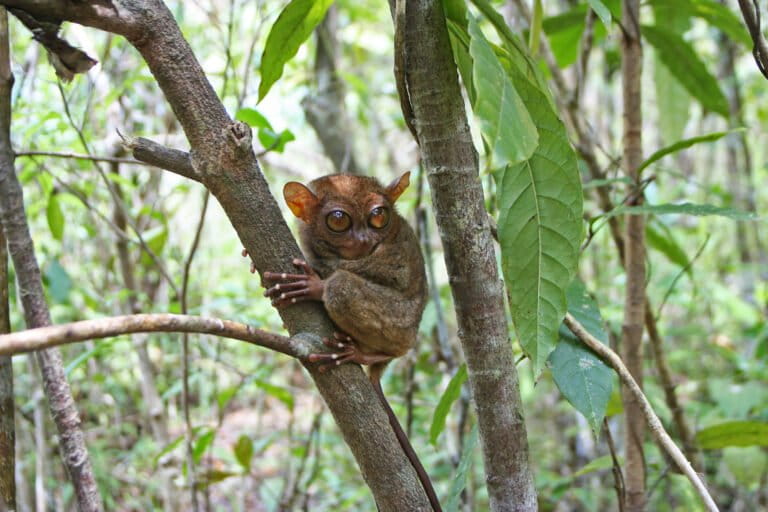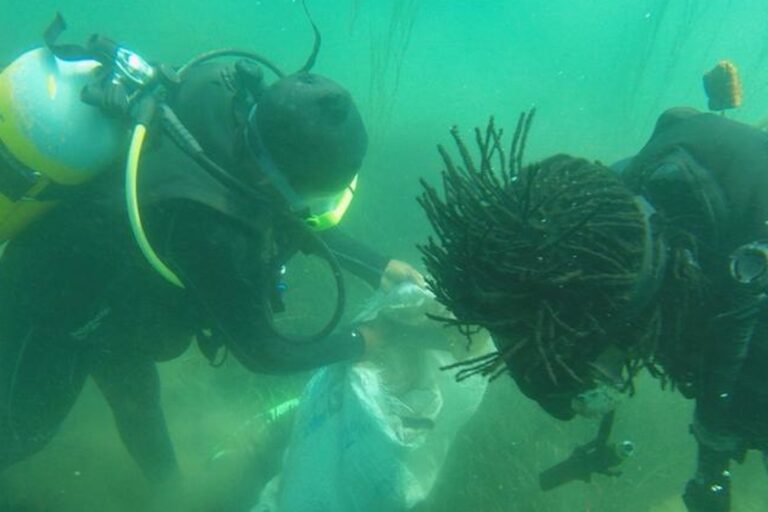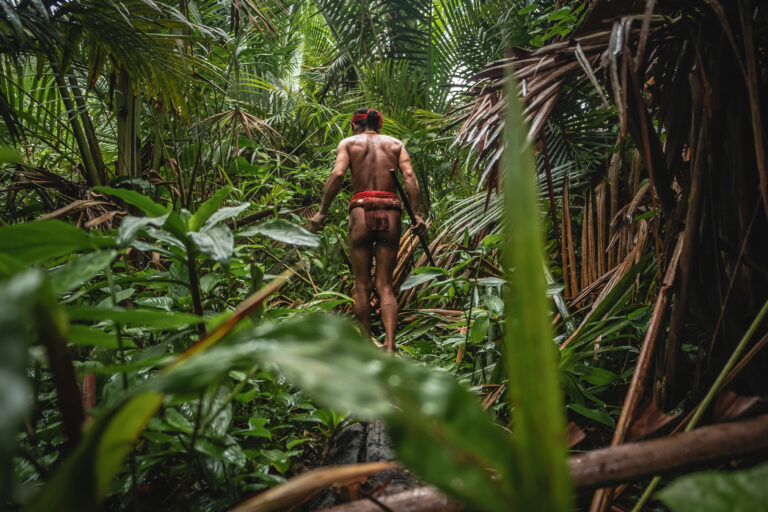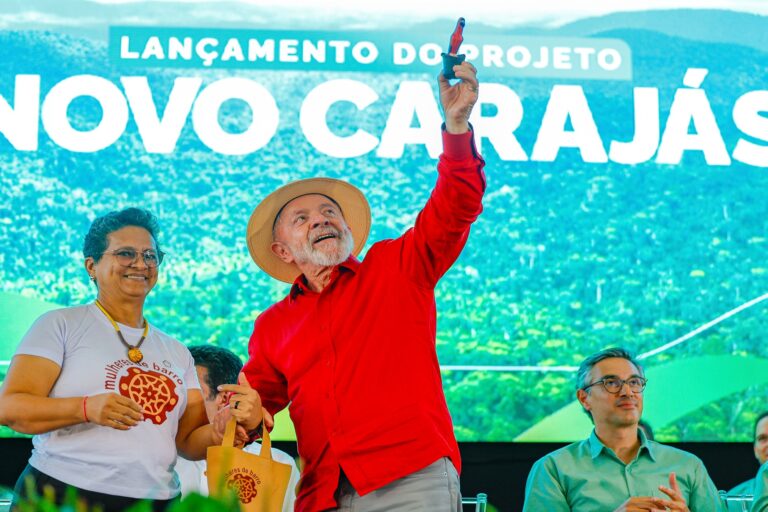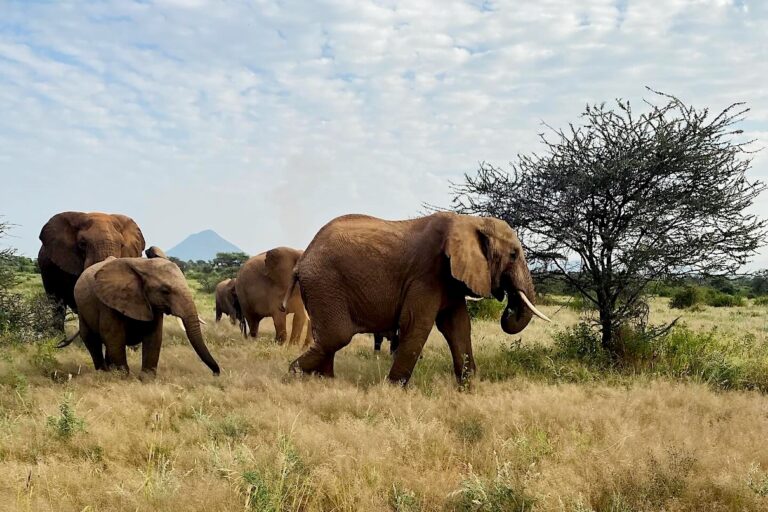- In November 2024, the Brazilian government launched an operation to oust illegal gold miners from the Munduruku Indigenous Territory in the Amazon Rainforest.
- However, there was little government action to address health issues in the aftermath of the destruction wrought by gold mining, Indigenous leaders and experts say.
- A wide range of diseases linked to mercury contamination and other environmental destruction derived from illegal gold mining spread in Munduruku lands, including diarrhea, itchiness, flu, fever, childhood paralysis and brain problems.
- Munduruku leaders sent a letter to the federal government requiring actions to provide health assistance to their people, detailing a list of required actions, including measures to combat mercury contamination, malaria, food insecurity and lack of drinking water.
This is part five of a series on the operation to evict illegal gold miners from Munduruku Indigenous territories. Read part one, part two, part three, and part four.
“We’re sicker than before.”
This is how Indigenous leader Hidelmara Kirixi described health conditions in Munduruku communities despite the Brazilian government’s recent raids to halt illegal mining that caused widespread mercury contamination. “Pregnant women are no longer able to have a child by normal delivery because of this.”
A wide range of diseases linked to pollution and ecological destruction caused by illegal gold mining spread in her community in the Amazonian state of Pará, she said. They include diarrhea, itchiness, flu, fever, childhood paralysis and brain problems. “Children are also born with these diseases,” Kirixi, one of the coordinators of the Wakoborũn Munduruku Women’s Association, told Mongabay in a video interview.
In November 2024, the federal government launched an operation to oust illegal gold miners from the Munduruku Indigenous Territory. Authorities destroyed 90 mining camps, 15 vessels, 27 units of heavy machinery and 224 motorized pumps, and imposed fines totalling 24.2 million reais ($4.3 million).
However, there was little government action to address the health issues in the aftermath of the destruction wrought by the gold mines, Indigenous leaders and experts say.
“They didn’t bring any public policies to the territory, they didn’t bring health [programs], they didn’t bring food, they didn’t bring anything,” Alessandra Korap, a Munduruku leader and president of the Pariri Indigenous Association, told Mongabay on the sidelines of the United Nations Permanent Forum on Indigenous Issues, held in New York. “They simply took [illegal gold mining] away, leaving the people abandoned.”

Primary health care for Indigenous peoples in Brazil is provided by the federal government’s Special Secretariat for Indigenous Health (SESAI), a unit of the Ministry of Health. But this assistance has declined in recent years, according to Toya Manchineri, the general coordinator at the Coordination of Indigenous Organizations of the Brazilian Amazon (Coiab).
“SESAI’s assistance used to be much better,” he told Mongabay by phone. “There used to be teams that went to the territories every 15 days, but today there’s a huge demand for teams and they can’t afford to go to the territories. The Ministry of Health has to transfer more resources to SESAI so that it can provide good care and build infrastructure within the territories.”
SESAI and the Indigenous affair agency, Funai, did not respond to Mongabay’s requests for comment by the time this article was published.
Between January and October 2024, 381 cases of “toxic effects of mercury and its compounds” were registered in the Mundurku and Sawré Muybu Indigenous territories, the Ministry of Health told Mongabay in November 2024. However, the ministry didn’t respond to Mongabay’s requests for updated data, nor did it provide information about any health measures targeted at the Munduruku people after the mining crackdown.
“What we are hearing from the leaders is that the mining invasion is still going on. We’ve also heard reports of hunger increasing in some regions during the eviction operation, because the government’s actions have not yet been met with social services,” Ailén Vega, a researcher and doctoral student in geography at the University of California, Berkeley, told Mongabay by email. Vega has been following the territorial issues in the middle and upper stretches of the Tapajós River since 2016, focusing on the impacts of mercury exposure and contamination on the Munduruku people.
The Ministry of Indigenous Peoples told Mongabay in an email that the Munduruku territory is one of the 15 Indigenous lands that will receive support from the Ywy Ipuranguete project for the implementation of territorial and environmental management instruments. The project also aims to promote food sovereignty, sustainable income generation, and the preservation of Indigenous cultures and traditions. Ywy Ipuranguete means “beautiful land” in the Tupi-Guarani language, in reference to Indigenous territories’ fertility and socio-biodiversity richness. With total funding of $9 million, the project is coordinated by the Ministry of Indigenous Peoples with technical support from Funai. The Sai Cinza Indigenous Territory, also home to Munduruku communities and included in the mining crackdown, is not part of the federal program.
The Ministry of Indigenous Peoples said it couldn’t provide specific information about health issues in the Munduruku lands, calling these SESAI’s “direct responsibility.”

A tale of two Indigenous territories
The Munduruku territories were part of a group of seven Indigenous lands in the Amazon that President Luiz Inácio Lula da Silva prioritized in the crackdown on invaders since returning to power at the start of 2023. Federal agents carried out raids in four states, including the Yanomami Indigenous Territory in Roraima and the Arariboia Indigenous Territory in Maranhão. In most cases, the efforts responded to a Supreme Federal Court ruling requiring federal authorities to protect these traditional communities.
Like in the Mundurku lands, the operation expelled illegal gold miners, known locally as garimpeiros, from the Yanomami territory, the site of the first raids in January 2023. Beyond removing garimpeiros, the Lula administration also declared a state of public health emergency, and made providing health and food assistance to the Yanomami people a top priority.
In the two years since the raids, more than 6,200 Yanomami people have been treated at Indigenous health centers within the territory. In the Roraima state capital, Boa Vista, 15 of the 19 Yanomami children hospitalized for acute malnutrition, aged between 6 months and 5 years, gained weight and improved to a moderate condition.
In Pará state, the raids in late 2024 targeted the Sai Cinza and Munduruku territories, a continuous area larger than Belize and home to 11,000 Indigenous people. The territories straddle the municipalities of Jacareacanga and Itaituba, the latter notorious as the epicenter of illegal gold in the Brazilian Amazon.
Authorities tracked more than 7,000 hectares (17,300 acres) of illegal mines and 21 clandestine airstrips. Operations ceased across all the mines after the federal raids, officials said. To prevent garimpeiros from returning, the government promised to keep patrolling and monitoring the region.
However, unlike the Yanomami, the Munduruku people complain that there were no actions focused on health amid the operation to remove invaders from their land, which they say is a continuance of government disregard for their requests going back several years.
In April, Munduruku leaders sent a letter to SESAI requiring actions to provide health assistance to their people. Signed by the Wakoborũn Munduruku Women’s Association, the Pariri Indigenous Association and the Ipereğ Ayũ Munduruku Movement, the letter refers to a previous document from April 2024.
“The Munduruku communities of the Upper and Middle Tapajós have been systematically denouncing the reality of the violations to which they are subjected,” the leaders said in the letter. The document points to specific issues, such as the increase in diseases, contamination from mercury ingested from fish, food insecurity, and other forms of destruction of their territories.
They also sent a detailed list of actions to tackle health issues in the Munduruku territories, including more funding to set up appropriate structures to provide assistance in the region, and measures to combat mercury contamination, malaria, food insecurity and lack of drinking water. “We would like to know the progress of these demands.”

Mercury contamination and diseases linked to illegal mining
Research in 2019 found traces of mercury in hair samples of all 200 Indigenous people from three Munduruku villages in the Middle Tapajós who participated in the study. The research, carried out by Fiocruz, Brazil’s leading federal health research center, found that six out of 10 Indigenous individuals had mercury levels in excess of the safe limit. Fish were also contaminated.
In the areas most impacted by illegal mining, nine out of 10 participants registered high levels of mercury contamination, the research found. According to the findings, among children under the age of 5 who underwent neurodevelopmental tests, 16% showed problems with motor coordination and speech. The research was carried out in response to a letter sent to Fiocruz by Alessandra Korap Munduruku in 2017.
The research was coordinated by Fiocruz researcher Paulo Basta, who, since 2023, has been coordinating a study that will assess mercury contamination in pregnant Munduruku women and the consequences for their babies.
“Since the start of monitoring, we have a contingent of 80 children who have already been born with mercury levels in their hair samples,” Basta told Mongabay in a video interview.
The research is ongoing and preliminary results are expected to be presented to the Munduruku people in June, he said. A similar paper was published this month focused on the Yanomami territory.
The spread of malaria is also a concern in the Munduruku lands, as the region is endemic for the disease. According to the federal government, the Munduruku territory accounts for 60% of the malaria cases registered in the Rio Tapajós Special Indigenous Health District (DSEI Rio Tapajós), which caters to communities from nine Indigenous groups in Pará and Amazonas states. DSEI Rio Tajapós recorded 4,808 cases of malaria in its activity area in 2023, and 3,142 from January to September 2024, according to a statement published in December 2024. The Ministry of Health didn’t provide updated data.
“I often say that mercury is just the tip of the iceberg. At the base of this iceberg there are a series of problems that are sometimes even more serious than mercury contamination,” Basta said.


This May, Fiocruz, the Ministry of Health and the Ministry of Indigenous Peoples launched a technical manual for the care of Indigenous individuals exposed to mercury in Brazil. According to Basta, the aim is to provide guidance for appropriate treatment, given the lack of an established service network in place to cater to these people and the lack of knowledge among both health workers and patients.
“Health professionals aren’t used to dealing with this kind of situation as the symptoms of mercury contamination can be confused with many other illnesses. In fact, health professionals don’t even think of mercury contamination as a differential diagnosis,” Basta said. “And the patients, for their part, don’t have the knowledge of the spread of mercury in the environment, they don’t have the broad understanding that it affects fish. And since this process of contamination is slow and insidious, the symptoms appear discreetly and over time they get worse.”
With the launch of this manual, Basta said, the aim is to lay the foundations so that the system for assisting Indigenous patients is widely implemented, accompanied by training for the teams in the priority areas. If this contamination has already affected the central nervous system and the person already has mercury-related motor, sensory and cognitive defects, there is no cure, he said.
According to Basta, the only thing that can be done is to prevent these complications from evolving and to give these people a better quality of life. The detection of the disease at the early stages and appropriate interventions are especially important to allow contaminated children to have “a life closer to normal,” he added.
For Vega, the Berkeley researcher, the issue of mercury exposure will not be resolved in the short term, despite any government raids or decline in mining activity. According to her, the metal remains in the soil and the symptoms tend to be latent. “This means that any action taken is already seriously delayed,” she said.
She said there’s “an urgency” that must also be met with in-depth consultation with Indigenous people’s health specialists, such as shamans and elders, who know how to work with their traditional medicine, and consider how it also affects various other beings that are part of the Munduruku cosmology in order to guarantee their survival.
“Any proposal on how to combat mercury exposure or contamination needs to be seen in relation to the people’s ability to maintain their traditional diet and strengthen their food sovereignty, two aspects that have been totally affected by the mining invasion,” Vega said. “Mining has not only contaminated fish, but also reduced hunting, prevented the opening of gardens in certain areas, devastated fruit trees, and also facilitated the proliferation of industrialized foods in the village and other diseases, such as malaria. This means that the Munduruku people’s ability to live well and have good health is being chronically attacked.”
Banner image: Munduruku people from the Sawré Muybu village gather in an assembly to receive feedback from Fiocruz on the hair sample test results determining levels of mercury contamination in people. Image by Joao Paulo Guimaeres via Flickr (CC BY-NC-SA 2.0)
Additional reporting from Latoya Abulu.
Karla Mendes is a staff investigative and feature reporter for Mongabay in Brazil and a member of the Pulitzer Center’s Rainforest Investigations Network. She is the first Brazilian and Latin American ever elected to the board of the Society of Environmental Journalists (SEJ); she was also nominated Diversity, Equity and Inclusion (DEI) chair. Read her stories published on Mongabay here. Find her on 𝕏, Instagram, LinkedIn, Threads and Bluesky.
Fernanda Wenzel is an investigative reporter based in Porto Alegre, Brazil. A former Pulitzer Center fellow, she has investigated issues like land grabbing in the Amazon, the beef and gold supply chains, and violations of Indigenous and Quilombola rights. Wenzel’s stories have been published by Brazilian and international outlets like CNN, BBC, The Guardian, Folha de S.Paulo and Intercept Brasil.
Officials share strategies to stop spread of illegal miners from Munduruku land
FEEDBACK: Use this form to send a message to the author of this post. If you want to post a public comment, you can do that at the bottom of the page.



